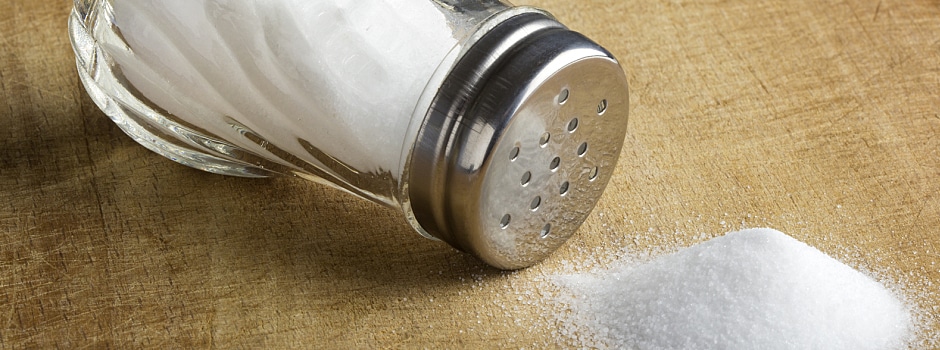Salt is a delicious and vital part of your diet. It adds mouth-watering flavor to the foods you eat and helps keep them fresh. But a focus on low-sodium foods could actually save your life.
Your body needs sodium to regulate water levels and help your muscular, circulatory, and nervous systems function properly. However, consuming too much sodium puts unnecessary strain on your heart and kidneys, and may drastically increase your risk of life-threatening diseases. In fact, nutritional epidemiologist and researcher Elena V. Kuklina, MD, PhD says that eating a high-sodium and low-potassium diet increases fatality rates by 50 percent. Here's what else you should know.
The Salt Problem
Salt is the main source of dietary sodium, and while most experts and recent scientific studies recommend just 2.3 grams per day, most adults consume about 3.4 grams per day. Just like sugar, there is growing evidence that salt is an addictive substance. The more you eat, the more you crave because your taste buds adjust to the amount of salt you're eating regularly.
5 Tips to Break the Habit
Cutting back your addiction to sodium can be easier than you might think. Focus on trying a few of the simple steps below as you plan for your weekly meals and snacks.
1. Avoid Packaged Foods
Avoid the following foods on future grocery trips: packaged snack foods, canned foods, lunch meat, bacon, sausage, frozen foods, jarred sauces, and condiments like ketchup. Packaged foods are one of the biggest sources of sodium.
2. Cook at Home
According to the U.S. Food and Drug Administration, in an average diet, around 75 percent of sodium comes from packaged food and eating at restaurants. What are the packaged foods you frequently purchase? Try making them from scratch instead. For example, fresh salsa, salad dressing, and pasta sauce can all be made with a handful of simple ingredients and very minimal salt, and they'll surely taste better than the store-bought variety.
3. Try Salt Substitutes
Replace the salt in your shaker with other interesting spices, such as garlic, curry, chili powder, and fresh herbs. Use more lemon and flavored oils and vinegars in your dishes to give them punch and zing. Try a new spice every week to keep it interesting. Just make sure they don't contain hidden salt.
4. Eat More Fresh Fruits and Vegetables
Not only are fresh whole fruits and vegetables naturally low-sodium foods, a diet high in these foods helps boost your overall potassium intake, which helps offset the hypertensive effects of sodium.
5. Drink More Water
Carry a refillable water bottle with you everywhere you go as a reminder to drink more throughout the day. Staying properly hydrated will help reduce salt cravings.
The best way to break any habit is to take small and gradual steps toward a new way of living and thinking. Don't try to incorporate all of the above steps all at once. Do a little at a time, and remember that both your taste buds and your health will take some time to adjust. As long as you remain dedicated to reducing your sodium intake, your body will thank you.
Related Articles

Liquid Aminos: What's with the Hype?
Liquid aminos are a great substitute for soy and tamari sauce. Here's what you should know about adding this seasoning to your meals.

5 Butter Substitute Options
Many simple food items can be used to replace butter. Improve the flavor and nutrition profile of your dishes by trying a butter substitute.
